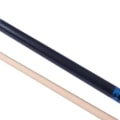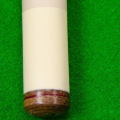They're excellent signs, have intricate, perfectly aligned dots and inlays, and they hit better than some British made signs I've tried. First of all, I must thank you for taking the time to share some of your knowledge. There is no doubt that many studs made in China are manufactured as cheaply as possible, with the cheapest materials. However, it is possible for a foreign-made cleat to be of comparable quality to one made in the United States.
This doesn't seem to happen that often, but it's certainly possible. There are many people who are satisfied with their predator axes, for example. For a long time, signs from China were made with Ramin wood. It is a much cheaper wood that is not good for good signs.
These are the cheap walking sticks that you can find in big stores. This gave the Chinese a bad reputation among the players in the group. I see the inside of pool cues all the time and will be happy to contribute my two cents on this topic. You can buy a bunch of ramin logs for almost nothing and some taco factories simply choose to save money on raw materials using inferior wood species.
Peri cues is also one of the sponsors of the EPBF “Eurotour”, in addition to having its own popular live broadcast series “LCBA in China. The most important area of cleat manufacturing where cost reduction has the greatest impact is on the signal axis. The choice of materials used to produce a cue will have a big impact on the total cost of making a cue. Somewhere along the way, someone decided to wrap the handle of his pool cue with him and the story changed forever.
The reason custom signs are more expensive is because often the woods used in fine custom signs are hand-selected to much more rigorous quality standards than what is considered acceptable for use on large factory cleat production lines. Go to any Walmart store, Dicks or other large store and you will see what the signals of low-end production look like. Finding the right cleat factory and manufacturers can make a big difference to the success of your business in the future. That, coupled with the fact that the weather is different and its transportation around the world, can cause the signal to deform and develop more problems.
In production environments, time is money and cleat mills need massive quantities of raw materials for production, so they create processes to speed up this drying process and end up producing fairly dry and fairly stable wood. This reduces the time spent producing an individual part to a fraction of the time it would take for a custom cleat manufacturer to perform the same preparatory task by hand. With the great aesthetic look and masterful precision of craftsmanship, it's hard to believe that these studs are not handmade. Huge initial investments are made in expensive machinery that automates and accelerates the individual steps required to transform raw wood into billiard cues.



